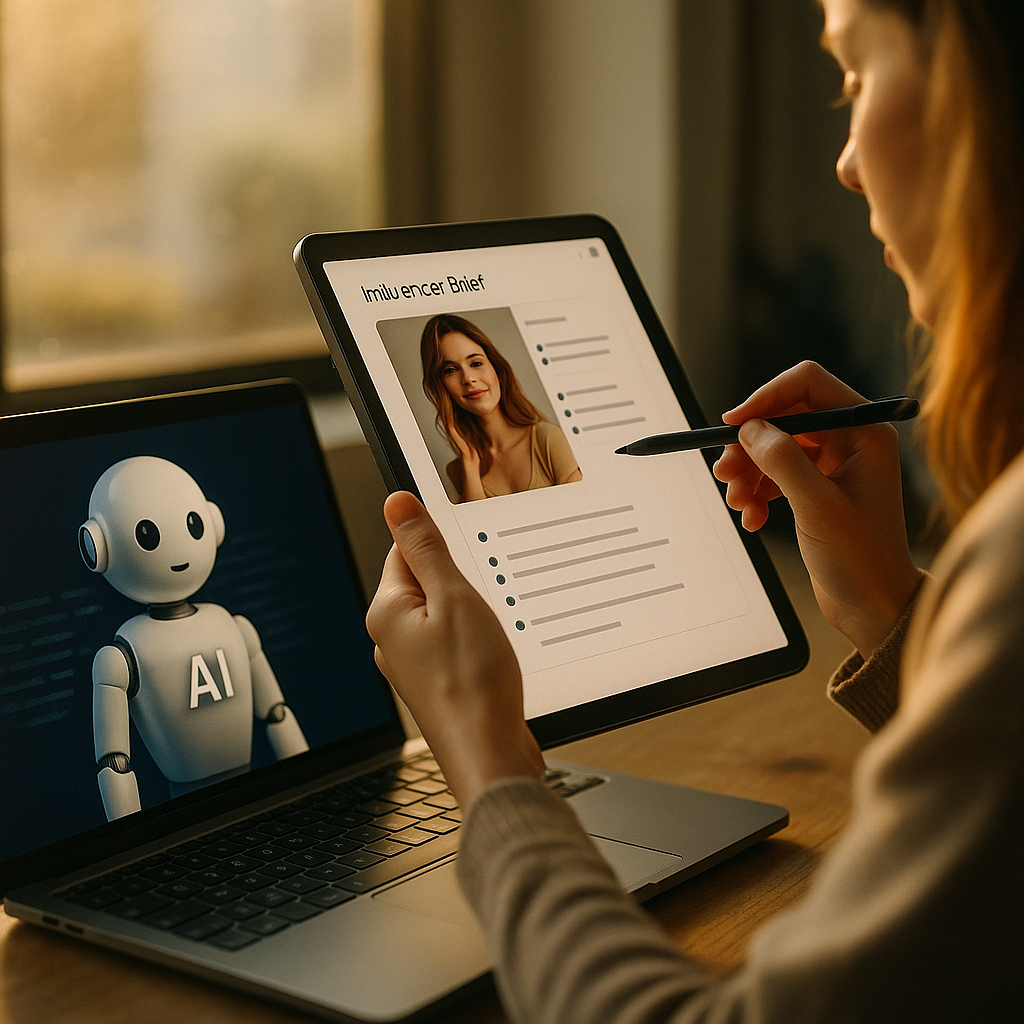Leveraging advanced technology, brands can now streamline campaign planning by learning how to use AI for influencer brief creation and optimization. This innovative approach saves time, increases precision, and drives better outcomes for brand collaborations. Let’s explore strategic ways to harness AI for brief development, ensuring every influencer partnership is primed for success in 2025 and beyond.
What Is an Influencer Brief and Why Optimize It with AI?
An influencer brief acts as a comprehensive guide for creators, outlining campaign goals, deliverables, brand messaging, and content guidelines. A strong brief not only aligns influencer content with marketing objectives but also nurtures creative freedom. Optimization with AI ensures clarity, relevance, and customization at scale—key advantages in today’s fast-moving digital ecosystem, where efficiency and personalization are vital.
- Clarity: AI eliminates ambiguity by auto-detecting unclear instructions.
- Personalization: Machine learning adapts briefs for each influencer’s audience and style.
- Scalability: Automated systems generate and revise hundreds of briefs quickly.
- Data-driven: AI incorporates latest trends, platform guidelines, and competitor insights.
Marketers who use AI-powered briefs report more cohesive content and up to 25% higher campaign engagement, according to a 2024 Influencer Marketing Hub report.
Steps to Use AI in Influencer Brief Creation
Integrating AI into your brief creation process starts with defining clear objectives and gathering relevant data. Here’s a proven workflow:
- Input campaign details: Start by feeding your AI tool with brand voice guidelines, campaign goals, target audience profiles, and desired platforms.
- Select appropriate AI models: Use models specializing in natural language generation and sentiment analysis for personalized, positive communication.
- Generate the draft brief: Allow AI to create a first draft, incorporating clear CTAs, content specs, and required disclosures for each platform.
- Tailor for influencer fit: Algorithms can adjust the tone and examples within the brief to match each influencer’s niche and preferred content format (e.g., Reels, TikTok, Stories).
- Review and refine: Human oversight ensures the brief is brand-aligned and error-free. AI tools flag inconsistent or ambiguous instructions for quick edits.
Brands using this hybrid human-AI approach have reported more satisfied creators and fewer campaign revisions, as automated checks help avoid overlooked details.
Optimizing Influencer Briefs with AI-Driven Insights
Real optimization happens when briefs are continuously updated with performance data and platform trends. In 2025, many leading influencer platforms offer:
- Performance analytics: AI tools analyze previous content outcomes to suggest clearer deliverables, more effective hashtags, or timely posting schedules.
- Sentiment and engagement monitoring: Machine learning identifies which types of content resonate most with each target audience, refining brief instructions for future campaigns.
- Language and formatting optimization: AI recommends optimal word counts, tone (e.g., conversational, instructional), and even visual assets based on emerging trends.
Regularly optimizing briefs increases consistency while allowing each influencer’s creativity to shine, ultimately producing higher-quality sponsored content and authentic brand advocacy.
Personalization: How AI Enhances Influencer Collaboration
AI doesn’t just streamline processes; it elevates creator partnerships through smart personalization. Here’s how:
- Profile matching: AI tools analyze influencer content styles, audience demographics, and engagement history to tailor every brief for maximum relevance.
- Localized briefs: For global campaigns, AI instantly adapts instructions for regional language, cultural nuances, and legal requirements.
- Real-time feedback: During ongoing collaborations, both creators and brands receive AI-generated suggestions for content tweaks, optimizing in-the-moment impact.
This level of customization isn’t possible at scale without AI, and it’s proven to boost creator loyalty and campaign ROI, especially as influencer marketing grows more results-driven each year.
Best Practices When Using AI for Influencer Briefs
To maximize the benefits of AI in influencer brief creation and optimization, follow these best practices rooted in Google’s EEAT (Experience, Expertise, Authority, and Trust):
- Maintain transparency: Let influencers know when AI has been used in brief creation; openness builds trust and fosters collaboration.
- Combine AI with human insights: While AI handles data and trends, human marketers ensure creative alignment and nuanced understanding of campaign context.
- Protect data privacy: Use secure, compliant AI tools that safeguard sensitive information.
- Test and iterate: Use A/B testing of briefs to evaluate campaign effectiveness, leveraging AI to refine messaging over time.
- Document results: Maintain records of which AI-generated briefs delivered the best outcomes—this institutional knowledge strengthens future campaigns.
Adhering to these principles not only optimizes efficiency but also upholds the high standards modern consumers expect from brand-influencer collaborations.
Key Takeaways: Building Better Influencer Campaigns with AI
AI-driven influencer brief creation and optimization let brands operate faster, smarter, and more creatively. With customized, data-backed briefs, marketers foster authentic collaborations and achieve measurable results. By balancing AI efficiency with human expertise, you can launch standout campaigns that resonate in 2025’s competitive landscape. Embrace these tools to transform your influencer partnerships—and stay ahead of market trends.
FAQs About Using AI for Influencer Brief Creation and Optimization
-
Can AI completely replace humans in influencer brief creation?
No. While AI handles data analysis and scales content creation, human oversight ensures creativity, emotional nuance, and brand integrity are preserved.
-
How secure is my data when sharing campaign details with AI tools?
In 2025, leading AI platforms use enterprise-grade security and comply with global privacy laws, but brands should always vet providers for transparency and compliance.
-
Which AI tools are best for influencer brief optimization?
Many platforms integrate advanced language models and analytics dashboards. Top choices include solutions built for influencer marketing, offering automation, personalization, and collaboration features.
-
How do I measure the impact of AI-optimized briefs?
Track metrics such as content quality, engagement rates, campaign turnaround time, and influencer satisfaction through pre- and post-campaign surveys and analytics.
-
What should I include in every AI-generated influencer brief?
Include campaign objectives, brand guidelines, deliverable formats, content deadlines, required disclosures, creative inspiration, and metrics for success—tailored by AI to each influencer’s strengths and audience.
